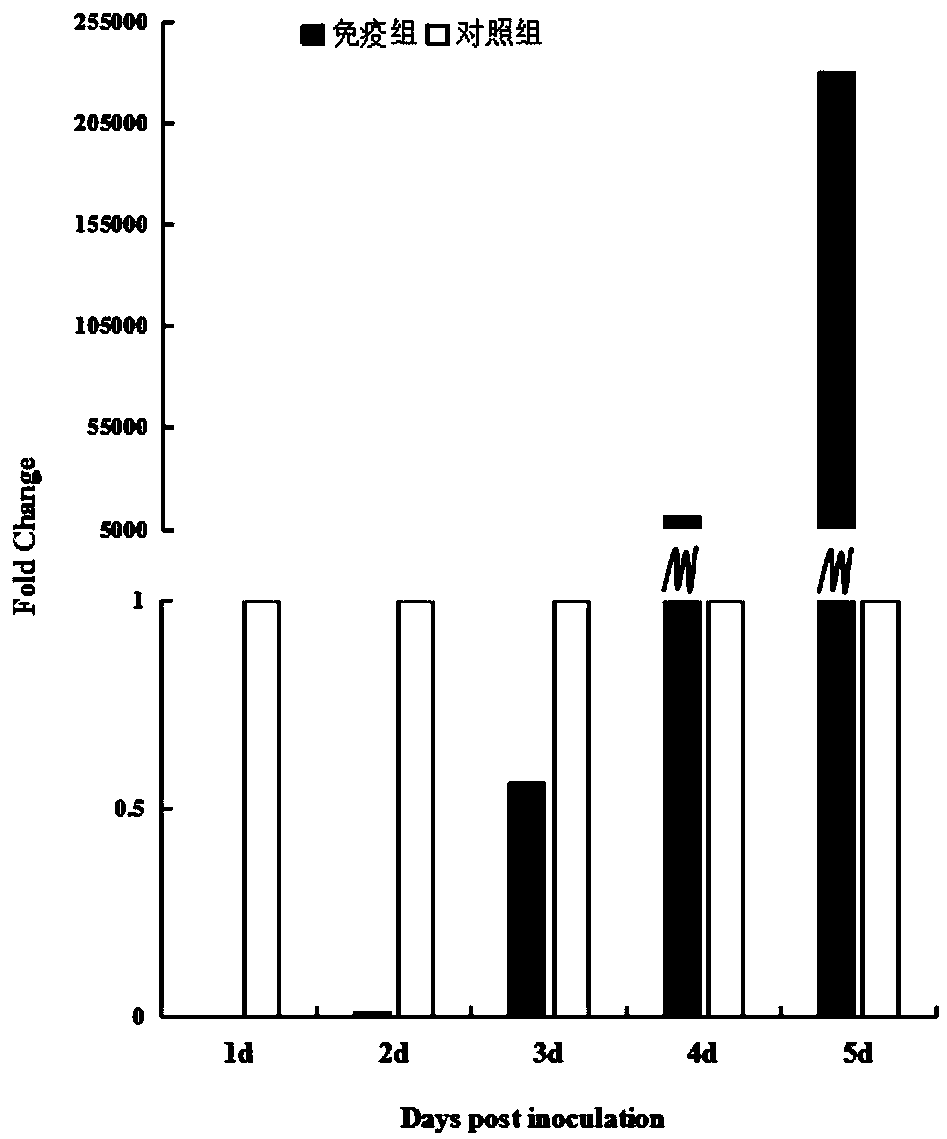Application of antigen causing antibody-dependent enhancement of Tembusu virus
A Tembusu virus and antibody-dependent technology, applied in the fields of molecular biology and immunology, can solve the problems of unsatisfactory protection effect and enhanced pathogenicity, and achieve the effect of ensuring protection effect and promoting virus proliferation
- Summary
- Abstract
- Description
- Claims
- Application Information
AI Technical Summary
Problems solved by technology
Method used
Image
Examples
Embodiment 1
[0020] Example 1 Acquisition of Antigens that Cause Tambusu Virus Antibody-Dependent Enhancement
[0021] According to the coding gene sequence of the antigen that caused the Tembusu virus antibody-dependent enhancement, the coding gene fragment was obtained by artificial synthesis, and inserted into the plasmid pGEX-4t-1 through the EcoR I and Sal I restriction sites to obtain the recombinant plasmid pGEX-4t-1. 4t-28. The expression vector pGEX-4t-28 was introduced into Escherichia coli to obtain an engineered strain expressing the antigen. Inoculate the LB medium with the engineering strain obtained, and wait for the OD 600nm When the concentration is 0.4-0.6, add IPTG with a final concentration of 1 mmol / L to induce protein expression in engineering bacteria containing the expression vector pGEX-4t-B. The expression product was purified using Glutathione-agarose (Sigma), and the operation steps were performed according to the instructions. The purified antigen was identi...
Embodiment 2
[0022] Example 2 The antigen-induced production of specific antibodies caused by the dependent enhancement of Tembusu virus antibodies
[0023] 1. The antigenic protein obtained in Example 1 was used to immunize 9-day-old ducklings, 200 μg each, emulsified with an equal volume of Freund's complete adjuvant for the first immunization. Two weeks after the immunization, a booster immunization was carried out, 200 μg per mouse, and the booster immunization was emulsified with an equal volume of Freund's incomplete adjuvant. The ducklings in the control group were immunized with the same volume of PBS, and the other treatments were the same.
[0024] 2. Two weeks after the booster immunization, the ducklings in the immunized group and the control group were subjected to wing vein blood collection, the serum was separated, and the specific antibody titer was detected by indirect ELISA.
[0025] Implementation results: the titers of specific antibodies in the serum of ducklings in t...
Embodiment 3
[0026] Example 3 Promoting effect of antigen-specific antibody on virus proliferation in vivo
[0027] 1. The ducklings after 2 weeks of booster immunization in Example 2 were subjected to the Tembusu virus challenge test. Each attack dose is 10 4 TCID 50 .
[0028] 2. 1-5 days after the challenge, the venous blood of the young duck wings was aseptically collected every day, the serum was separated, and the BHK-21 cells that had grown into a monolayer were inoculated. After incubation at 37°C for 2h, wash with PBS three times, add RPMI1640 containing 1% fetal bovine serum, and culture at 37°C for 3 days. The cells were collected, and the viral nucleic acid content was detected by fluorescent quantitative RT-PCR. Using the relative quantification method (2 -ΔΔCt ) for analysis. The primers used to detect viral nucleic acid are: upstream primer: 5'-GTGAGATCTTACTGCTATGAG-3'; downstream primer: 5'-ACTTGGCACATGTCTGTATGC-3'. GAPDH gene was used as internal reference, upstream...
PUM
 Login to View More
Login to View More Abstract
Description
Claims
Application Information
 Login to View More
Login to View More - R&D
- Intellectual Property
- Life Sciences
- Materials
- Tech Scout
- Unparalleled Data Quality
- Higher Quality Content
- 60% Fewer Hallucinations
Browse by: Latest US Patents, China's latest patents, Technical Efficacy Thesaurus, Application Domain, Technology Topic, Popular Technical Reports.
© 2025 PatSnap. All rights reserved.Legal|Privacy policy|Modern Slavery Act Transparency Statement|Sitemap|About US| Contact US: help@patsnap.com


